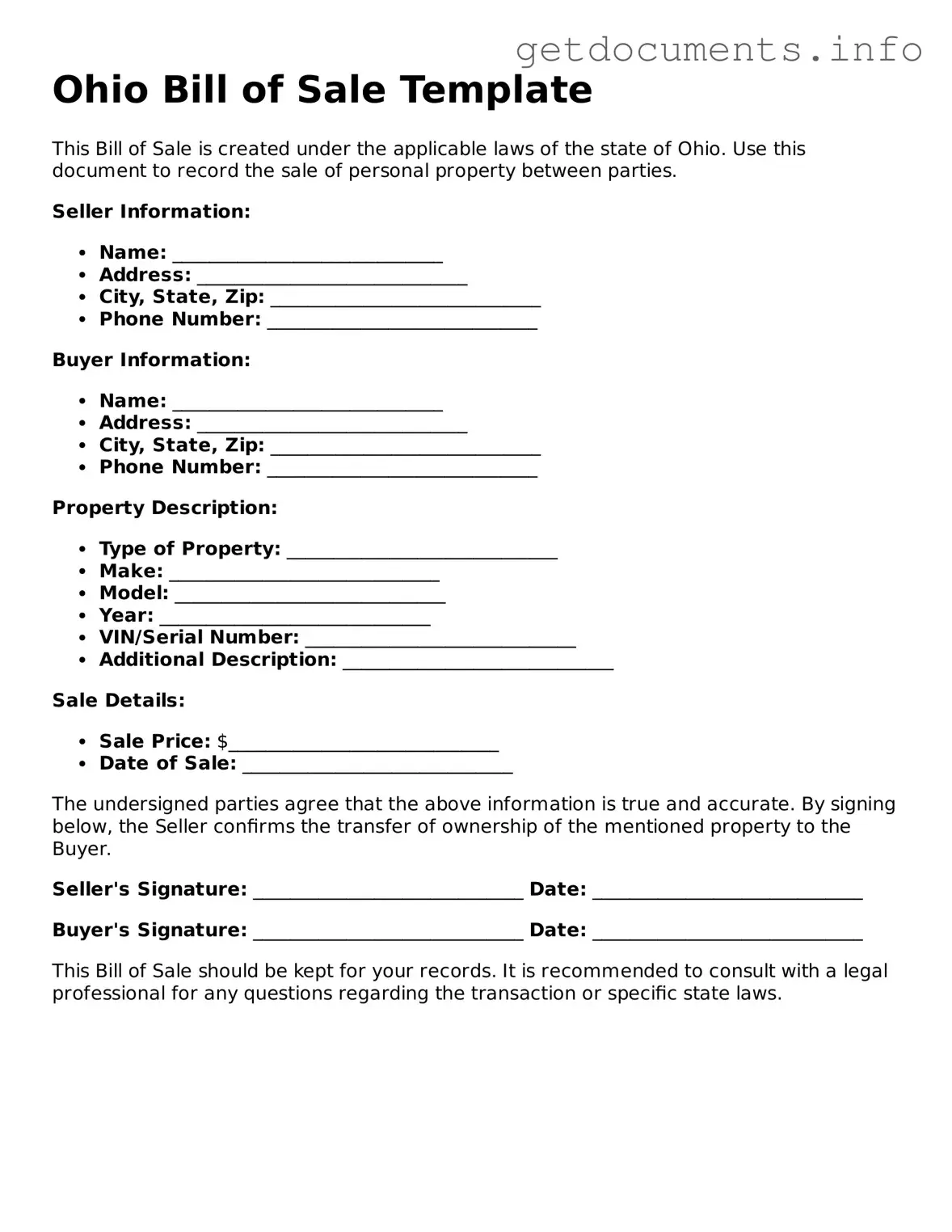In Ohio, the Bill of Sale form serves as a vital document that facilitates the transfer of ownership for various types of personal property, including vehicles, boats, and other tangible items. This form not only provides a written record of the transaction but also outlines essential details such as the names and addresses of the buyer and seller, a description of the item being sold, and the purchase price. By including the date of the transaction, the Bill of Sale helps establish a clear timeline for ownership transfer, which can be crucial in the event of disputes or legal issues down the line. Moreover, the form may also include specific clauses regarding warranties or conditions of the sale, offering additional protection for both parties involved. Understanding the significance of this document is key for anyone engaging in a sale or purchase in Ohio, as it ensures that the transaction is legally recognized and that both parties are protected throughout the process.
